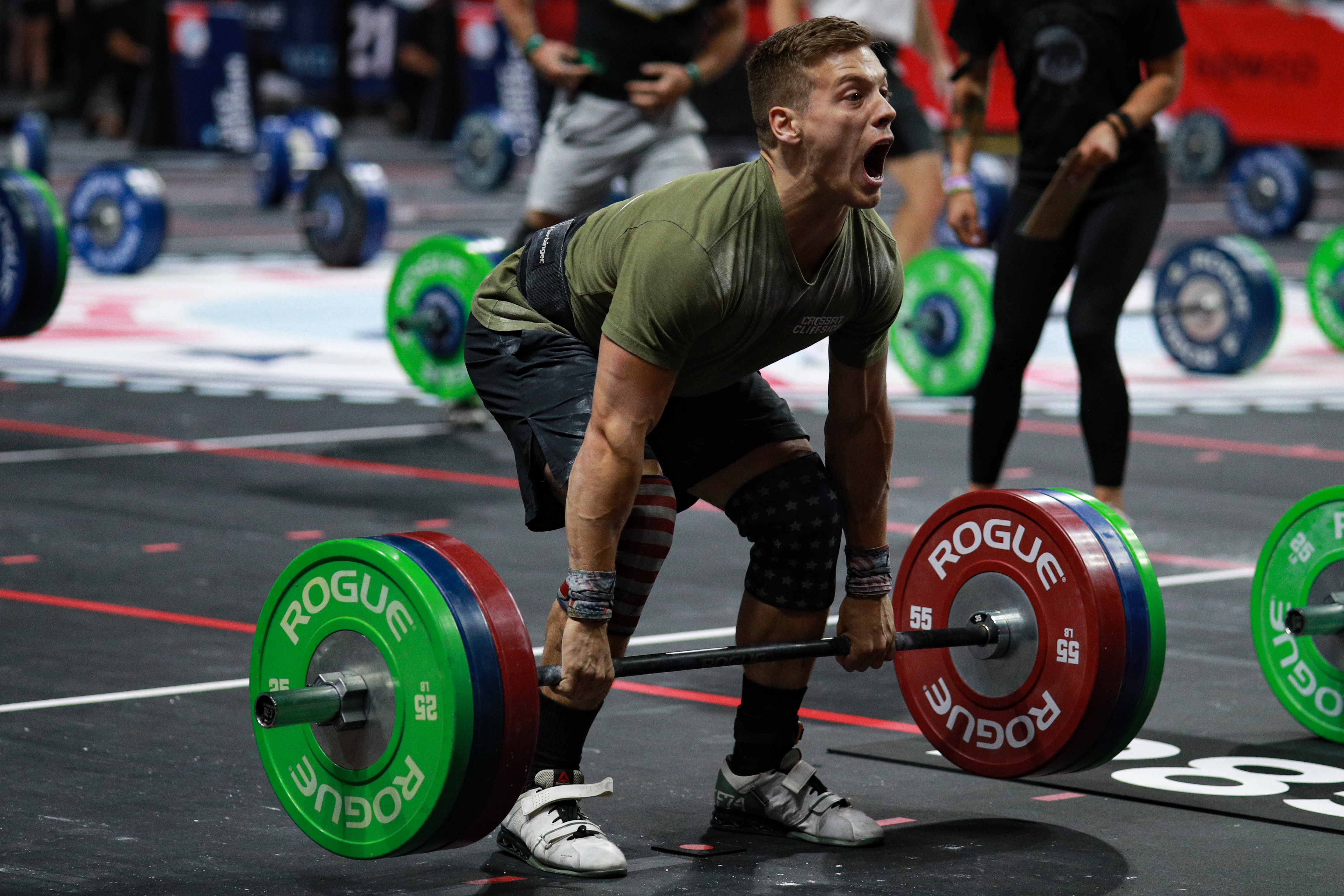There’s a reason CrossFit athletes log workouts — and it’s not (just) to post them on social media.
As the foundational article “Understanding CrossFit” explained in 2007, “The methodology that drives CrossFit is entirely empirical. We believe that meaningful statements about safety, efficacy, and efficiency, the three most important and interdependent facets of any fitness program, can be supported only by measurable, observable, repeatable facts; i.e., data.”
“We call this approach ‘evidence-based fitness.’”
So while the hallmark of CrossFit’s efficacy is constant variation, that doesn’t mean we should never repeat a workout. Day-to-day programming should vary, but regular retests indicate how our fitness evolves over time. That’s why every CrossFit Games Open has featured at least one repeat workout from Opens past.
And while the primary objective of the CrossFit West Coast Classic (WCC) was to determine which athletes would advance to the CrossFit Games, the competition — in which all seven individual events were exact or somewhat varied retests of past Regional and Games events — also gave us a glimpse of how far the Sport of Fitness has come.
In short? The fittest have gotten even fitter.
Let’s look at some data.
In every WCC event that was an exact repeat of a prior workout, the top men’s and women’s times were faster than those of the original event — even when the original times were set by athletes as formidable as now-five-time CrossFit Games champion Mat Fraser and 2017 silver medalist Kara Saunders.

Tola Morakinyo finished Regionals Snatch Ladder 2016 — a ladder of decreasing volume and increasing weight — more than 16 seconds faster than Fraser did five years ago (Kloie Wilson’s time was just a hair over a second faster than Saunders’).
But the improvement wasn’t limited to the top of the leaderboard. Of the seven men and 12 women at the WCC who performed the event at a 2016 Regional, five men and 10 women beat their old times — that’s 78% of all returning athletes.
Within those improvements, the men’s approximate average improvement was by more than 1.7 minutes; the women beat their times by more than 2 minutes. Wilson, who won the event at the WCC, shattered her 2016 score by more than 5 minutes.
The Triple-G Chipper 2017 and Regionals Finale 2017 saw similar results.
Once again, the times to beat in the chipper were Fraser’s (10:46.46) and Saunders’ (10:45.72), and once again, they were bested, this time by Spencer Panchik (9:53.58) and Bethany Shadburne (10:28.26).

In Regionals Finale 2017, Brandon Luckett and Dani Speegle set the new records, ousting Andrey Ganin and two-time third-fittest woman on Earth Sara Sigmundsdottir by about 5 and 25 seconds, respectively.
In that event, all but one of the 12 men who’d done it before improved; all 11 women did.
And here’s a bit of encouragement for those of us who’ll never see the view from atop a podium of any kind: Of the slowest scores from the three events that were identical to past events, five out of eight were faster than the slowest original times — proving that it doesn’t matter whether we’re the best or the worst; if we do the work, we’ll improve.
Now, not every event at the WCC saw across-the-board improvement.
No one improved in 2019 Ruck Run 2.0, for example, but it’s not a direct comparison. While the distance — 6,000 m — remained the same, the WCC version saw marginally heavier D-balls than the sandbags used at the 2019 Games.
Still, it’s hard to tell how an additional 10 lb. on one implement for the women and three for the men could make such a difference, and the record-setting heat in Las Vegas likely played a role as well. Cole Sager, who won the WCC event, clocked in more than 7 minutes after event winner Lukas Högberg did in 2019. On the women’s side, Emily Rolfe’s 2019 time bested CWCC event winner Bethany Shadburne’s by almost 6 minutes.
Push Pull 2.0 and Regionals Closer 2015 told similar stories. No one beat the top Games and Regional scores, but the WCC versions of these events were undoubtedly more challenging.
The 2014 Games event called for 7, 8, 9, and 10 handstand push-ups — deficit for the men — sandwiched with a 50-foot sled pull. Push Pull 2.0, however, demanded 9, 10, 11, and 12 handstand push-ups, this time strict and deficit for both the men and women. Between each set also came a slew of toes-to-bars and a 60-foot sled push plus another 60-foot sled pull.
Meanwhile, the clean ladder in Regionals Closer 2015 ended with barbells 30 and 25 lb. heavier (men’s and women’s) than its namesake from six years ago.

Of course, no comparison of any of these events is perfect. Countless variables such as location, time of day, and the field of competitors all influence results in immeasurable ways.
But if there’s one thing we can be certain of, it’s this:
In CrossFit, nothing gets easier. You just get fitter.
Cover photo by Duke Loren Photography